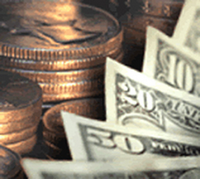As president of the G-20 this year, South Korea seemingly has an appetite for tackling the global economy's biggest problems. And few challenges loom larger than the significant global imbalances that helped pave the way for the recent international financial crisis. The Koreans have been busy promoting an apparently novel solution to this very problem: an international currency swap regime. But how would such an arrangement work, and could it actually help correct current imbalances? As important, is there any chance this idea will get off the ground?
The global economy of today is -- and has been for some time -- out of balance. While some economies run huge financial surpluses through export competitiveness and currency controls, other economies run huge financial deficits and borrow from surplus countries in order to balance their positions. The obvious solution to this problem is for surplus economies to export less by promoting domestic consumption. In other words, they need to sell the products they manufacture to their own citizens and rely less on wealthy foreign markets. But how do you convince countries to do this?
Enter the swap regime proposal.

